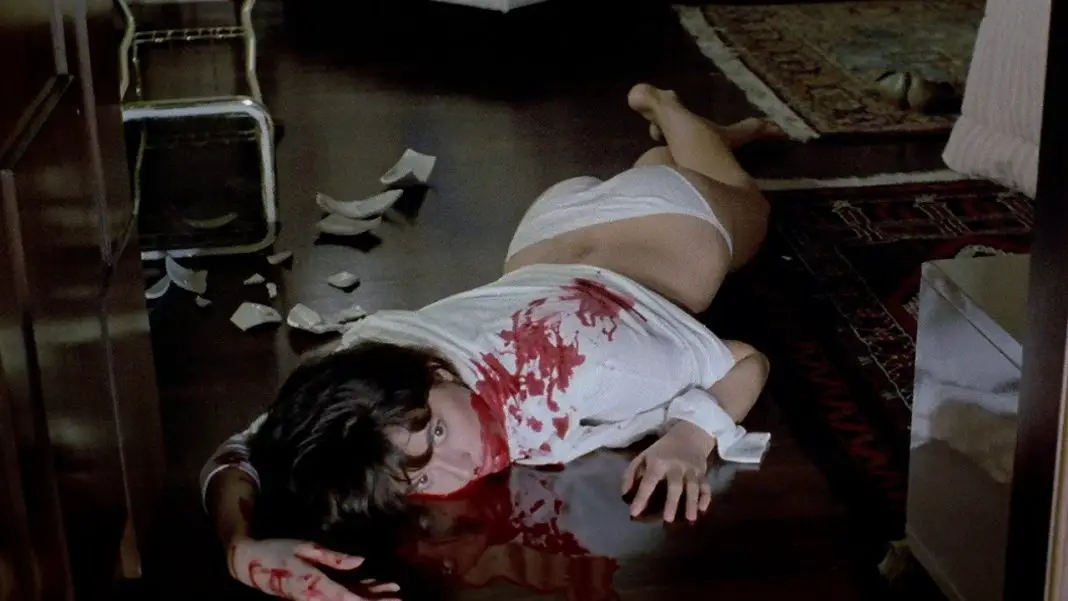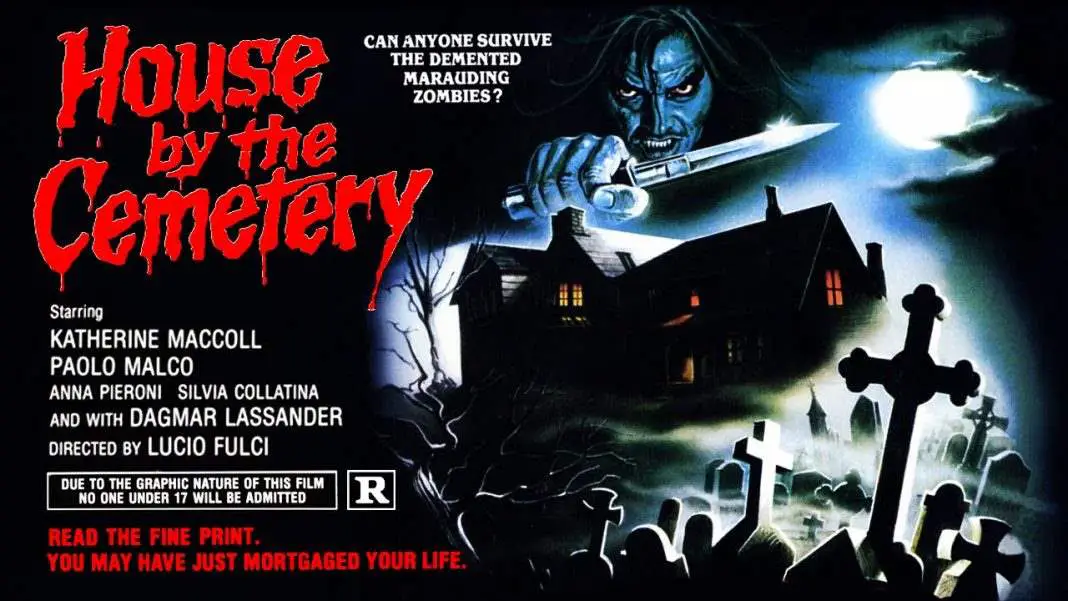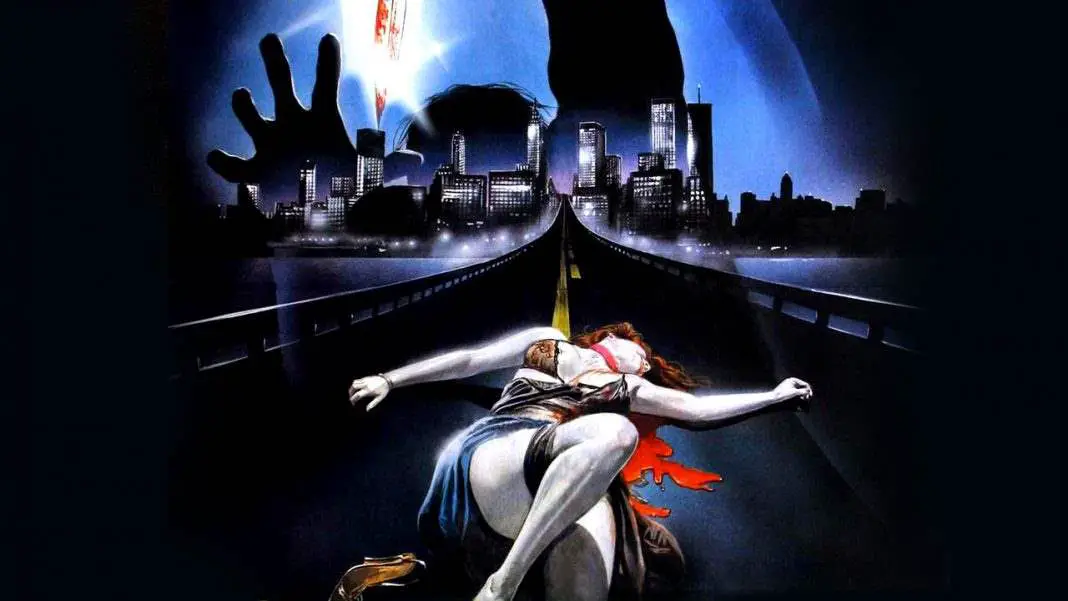Dario Argento is one of the all-time masters of horror. No matter how much the quality of work has fallen in recent years, when he was in his prime he was nigh unbeatable. While Suspiria and Deep Red get the most praise—and it is well deserved—one of his absolute best thrillers is 1982’s Tenebrae. The picture combined explicit gore with sophisticated style. It was gorgeously shot, a truly artistic production, as all of his previous movies had been. But this one also brought with it a powerful subtext that made it all the more interesting.
Tenebrae centers on a horror author named Peter Neal, who has come to Rome to promote his latest novel. This book, aptly titled Tenebrae, is—like all of his other books—horribly violent. He’s then approached by a detective who needs his help on a case. Apparently, there are a series of unsolved murders in Rome, and every single one of them is drawing inspiration from Neal’s books.
The movie is a great commentary on life imitating art, the psychological aspects of the genre and the fan base in general, especially for the early 1980s. In some ways it feels like a precursor to Fright Night and later Scream, which both centered on the fans—but which were told from the fan’s perspective. This one is told mostly through the author’s point of view. Obviously watching a horror movie or reading a horror novel does not turn anyone into a killer. But if one person who already has that in them claims to have taken inspiration from a writer’s work, that’s terrifying. It’s an incredibly smart concept, but in the wrong hands it could easily have been something awful. In nature alone, the concept is one step away from accusing horror fans of being psychopaths. But that’s not what Tenebrae is about at all.
A writer of horror knows their genre, knows the audience and knows what they want. They can take the criticism. One of the first questions Peter Neal gets asked in Tenebrae is how he can make such misogynistic, sexist content. Anyone who knows the genre knows that that’s not what horror sets out to be, but it’s still what the general public thinks and you can’t really change their mind. Tenebrae is wise in presenting these people who are always quick to attack the genre, because they’re a large part of where the horror comes from. The disturbing thing about Tenebrae isn’t that someone took inspiration from a book and started killing people, it’s that there are people who just sit around waiting for something like that to happen.
Did You Know? Wicked Horror TV Has Classic and Independent Horror Films Available to Stream for Free!
Tenebrae also predicted some unfortunate events that would happen as time went on. It wasn’t too long after this movie was released that some horror films actually did start getting blamed for murders. The Scream movies were cited as inspirations for the murder of Gina Castillo in the late 1990s. There was a very famous case in the early ’90s in which two ten-year-old boys kidnapped, murdered, and raped a two-year-old in Liverpool, leaving his body to die on the railroad tracks. Child’s Play 3 was blamed as the inspiration for the murder because it was reported that they had seen the film. Obviously, that brutal act has nothing to do with anything that happens in the Child’s Play franchise, but the movie was pulled from US theaters and banned in most foreign markets nonetheless. The boys were later revealed to have not seen the film.
Tenebrae explores the controversy from all angles. The killer, interestingly enough, is targeting people who he believes are sinful. Whether they be morally or ethically corrupt, or in some cases he believes them to be sexually deviant, he kills them because he believes they are committing acts of evil. In this film, it’s the killer who believes he is taking the moral high ground.
The smartest thing about Tenebrae, however, is that it explores these themes—in Euro-Pop Argento fashion—for the first two thirds and then completely negates them in its climax. The ending suggests a completely different angle than what the audience had believed to be true. It not only explores the horrific idea that someone who sees the movie could be inspired to act it out, but then also explores the fear that writing this material takes a toll on the writer themselves. Neither thing is true, but both are commonly believed. Argento’s use of heightened reality might work best here, because it highlights the absurdity of the situation and what the mobs of people aggressively dismissing horror in the 1980s actually believed. Ironically, the censors had very little issue with Tenebrae and there was almost no public backlash. The only thing they wanted cut was a sex scene involving a transgender model.
For all of these reasons, Tenebrae remains one of Dario Argento’s most interesting and daring films. There’s a better balance of style and substance than some of his later features and it never makes the horror fan ashamed to watch it. It’s look at the moral debate on horror only makes the movie more appealing to the masses and at the same time, it offers everything that people expect from a giallo—especially an Argento feature—in spades.






